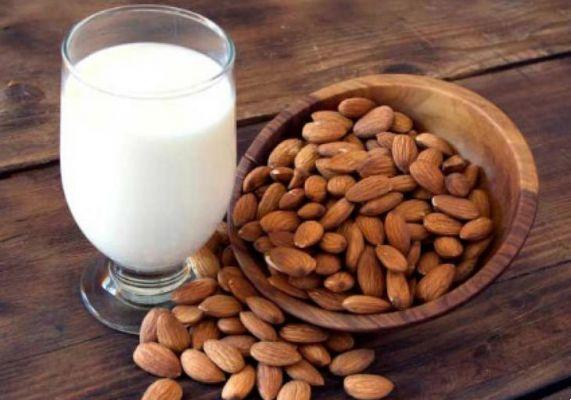
Almonds, almond seeds (Prunus dulcis), they are oil seeds rich in vitamins and minerals, help keep the heart, arteries and bones in good health, and also represent a valid natural remedy againstanemia.
Almond milk, bevanda nutriente che si ricava da questi semi, alimento tutto del paese poichè veniva originally produced by Sicilian monks, is now known and marketed practically everywhere, although perhaps not everyone knows that it can also be done at home. Let's find out how.
How milk is prepared
The use of almonds in the kitchen it is very varied, known above all in the regions of the southern country, such as Sicily, Calabria, Puglia; almonds are the protagonists of many gastronomic preparations: think for example of almond paste or marzipan, or the much envied Sicilian almond granita.
A fairly common drink prepared with these tasty seeds is the almond milk: delicious and nutritious, it is perfect as a milk substitute for infants suffering from cow's milk intolerance or for those following a vegan diet.
Preparing almond milk, like the extraction of other vegetable milks, is very simple, just follow the few steps indicated below.
Ingredients for a liter of almond milk:
> 100 grams of dried or fresh organic almonds, preferably peeled,
> a liter of water,
> 25 grams of sugar or maple syrup or dates for sweetening.
Preparation
Rehydrate the almonds if they are dry, putting them in a bowl with water at room temperature, leaving them to rest for about an hour. Drain them keeping the water aside, adding the necessary to get to the liter of the recipe.
Put the almonds in the blender together with the sugar or sweetener of your choice and operate, chopping them as finely as possible, gradually adding all the water.
Leave everything to soak for about three hours, drain and squeeze the milk with the help of a clean cloth or sterile gauze and bottle. Store in the refrigerator and consume, making sure to always shake it first, within three or four days.
The almond pulp (okara) that remains in the cloth should not be thrown away: you can use it as a nourishing ingredient for cakes, biscuits, granitas or much more!
Discover also how to prepare roasted and caramelized almonds at home
Almond is a precious fruit
Set up for the 50% monounsaturated and polyunsaturated fats, almonds are a precious source of energy and have a rather high calorific value (about 600 calories per 100 grams).
Valuable reserve of vitamin E and mineral salts, especially magnesium, iron and calcium, they also contain many fibers (12%). Thanks to the high percentage of "good" fats, almonds keep the arteries and the heart clean, because they help eliminate cholesterol, and are useful for the skin and hair well-being. Thanks to the high amounts of iron they are a good remedy for anemia, while calcium makes them valuable for bone health.


























